Do you know anyone who would ever imagine a more unexpected scene than two elephants, dressed in their Sunday-best, on the beach at a popular seaside resort? I do! His name was William Ellam.
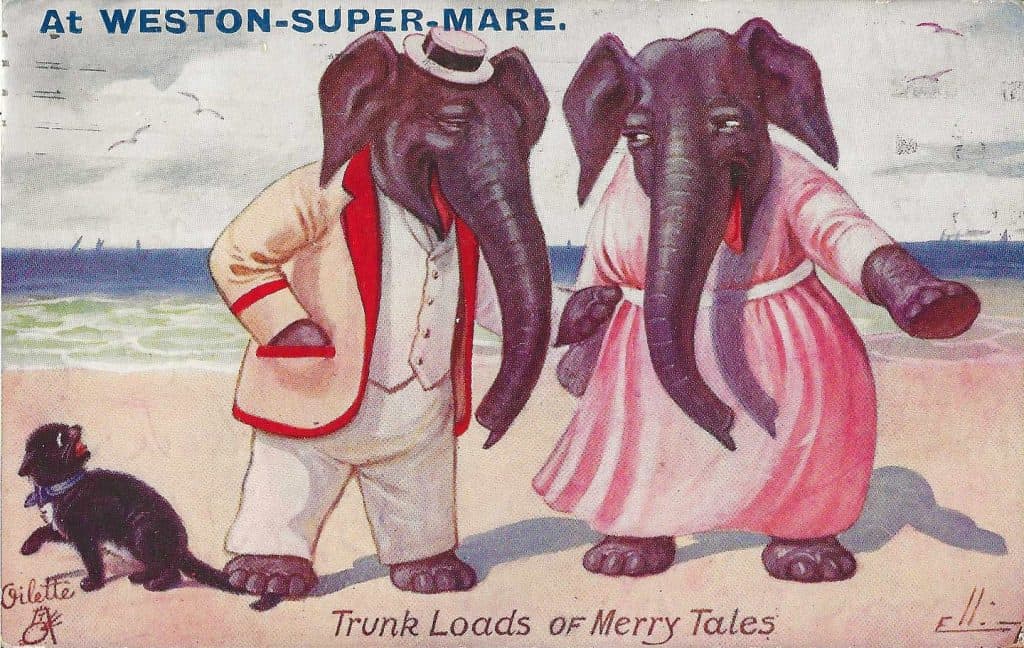
There is but one problem! Apparently, the name William H. Ellam was a very common one. And, it was common, not only in England, but in Canada, too! The Internet is of little help except for the work product of the William Ellam who was an illustrator and worked for at least five different English postcard publishers.
Specifically, we know that William H. Ellam fancied himself an illustrator, not an artist. He was born in 1858 at Enfield, Middlesex. (Today, Enfield is about a half-hour drive north of London. Located just inside the M-25 it is well known as the manufacturing center of the Enfield Rifle.)
One biographical data source suggested that Ellam’s first employment was with a London broker at the London Stock Exchange.
As for Mr. Ellam’s illustrative career, it is known that most of his work was for Raphael Tuck & Sons. There are far more than 200 images credited to Ellam that are arranged in at lease twenty sets (series). The earliest catalog date of any cards signed by him is 1904.
Ellam’s favorite topic would be difficult to determine but he certainly seemed to enjoy drawing happy animals. His “Breakfast in Bed” cards feature at least 16 different animals in bed with breakfast trays filled with the preferred foods of the species, e.g., mice and birds are on the menu for the cats who paid extra for breakfast in bed. Other curious delights are the mushrooms that the frogs are about to eat and the carrots and huckleberries the donkeys are enjoying.
Finding an obituary for William Ellam proved elusive, but one source claimed that his death occurred in 1935.
The history of Weston-Super-Mare, a coastal town in Somerset, England, dates to Roman times, when it was known for its mineral springs and therapeutic waters. In the nineteenth century, with the advent of the railway in 1841, Weston emerged as a popular seaside resort, attracting visitors seeking the health benefits of sea air and bathing. The first decade of the twentieth century could have been when William Ellam first thought of what “mixed bathing” would be like in Weston.

The establishment of an amusement pier in 1904 and various hotels helped create their reputation as a holiday destination. Mixed bathing, where men and women shared bathing facilities, gained popularity during the Victorian era. This shift was influenced by changing social norms and the push for more relaxed attitudes towards gender roles in public spaces. Weston-super-Mare, like many other resorts, adapted to this trend, encouraging mixed bathing in designated areas along its expansive sandy beaches.
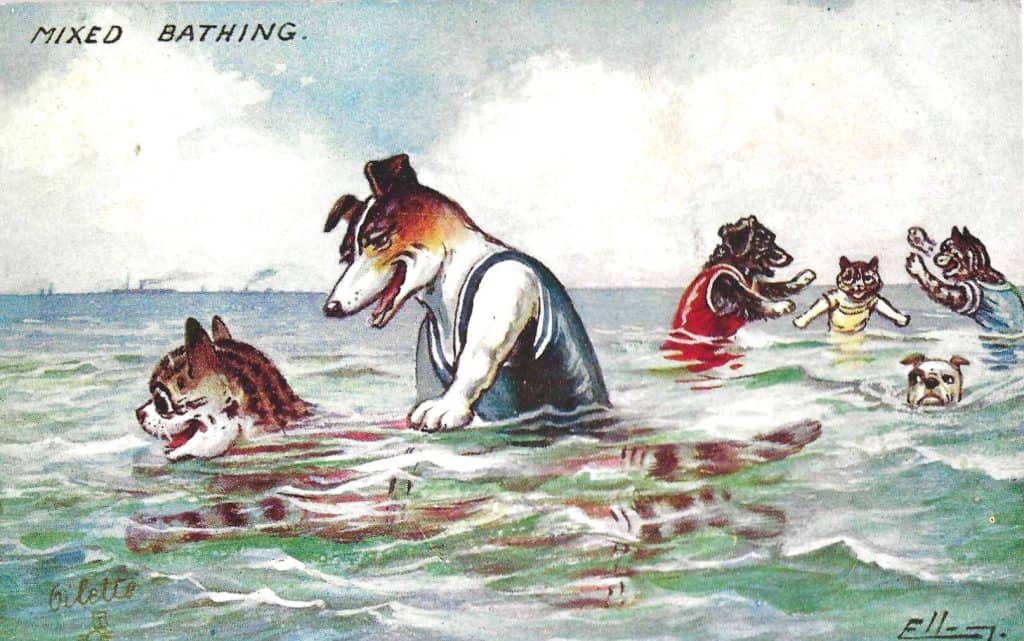
By the early twentieth century, the practice became commonplace at seaside resorts.
Today, Weston-Super-Mare continues to be a vibrant tourist destination, celebrating its historic roots, but still embracing modern recreational activities.
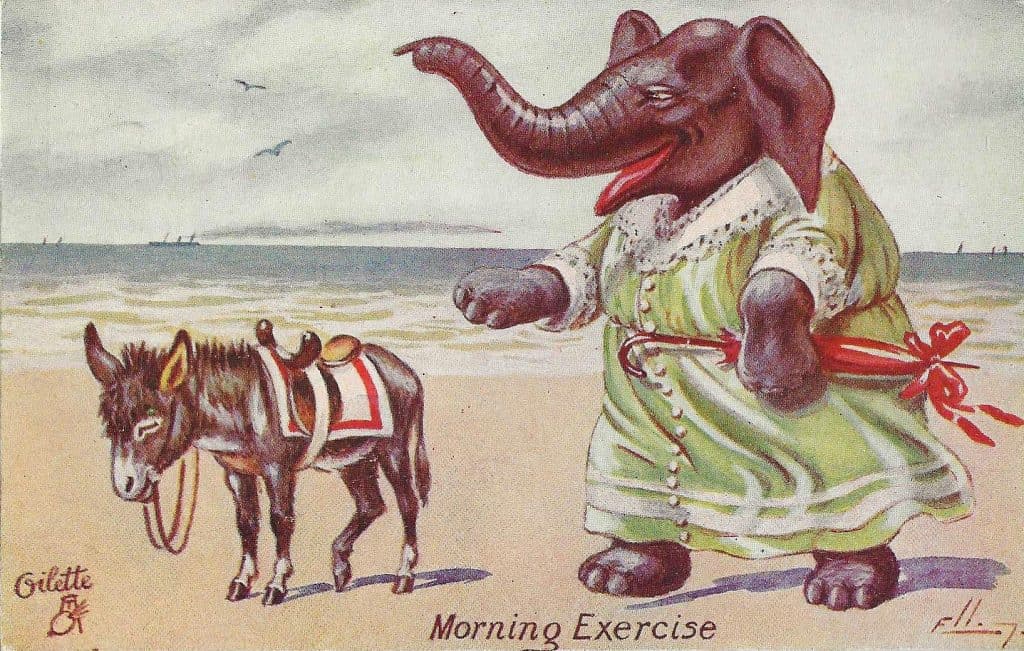
The popularization of mixed bathing long ago reached its peak for it is almost certain that the term has not appeared in any newspaper or advertising media for years.
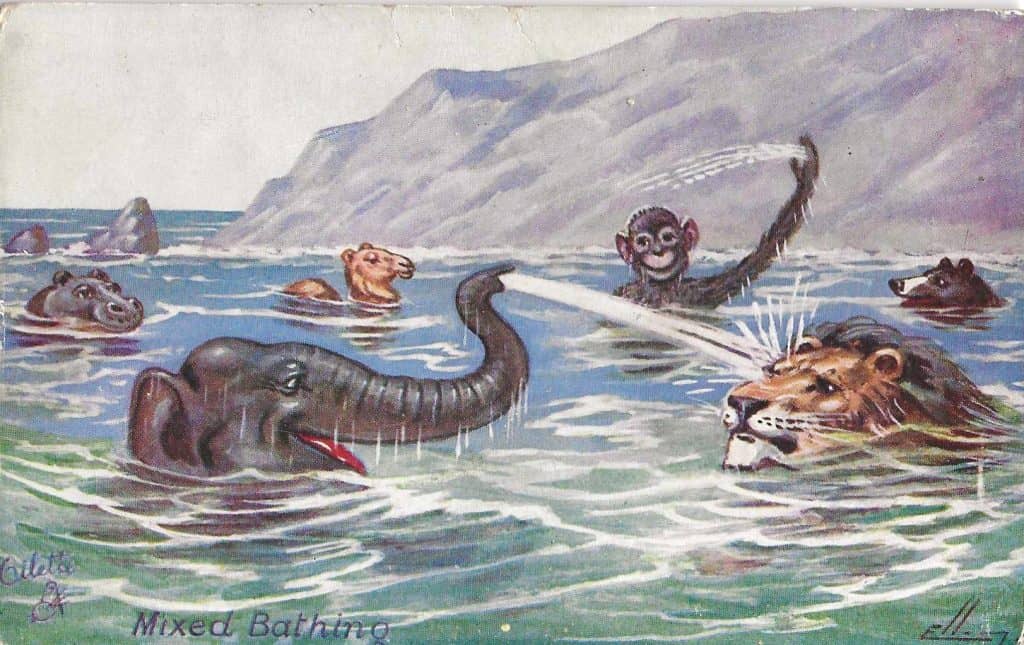
In regions like Brighton, where they provided bathing machines on the beaches to accommodate mixed bathing, the machines have rotted away to dust, and the beaches are now covered with sand-chairs and cabanas that await the shore enthusiasts who appear in swimwear created by fashion designers who practice the trendy ideas that “less is best.”
Weston-Super-Mare is the place to find a ferryboat ride to Ireland and dozens of amusements and attractions. One special place is the International Helicopter Museum.
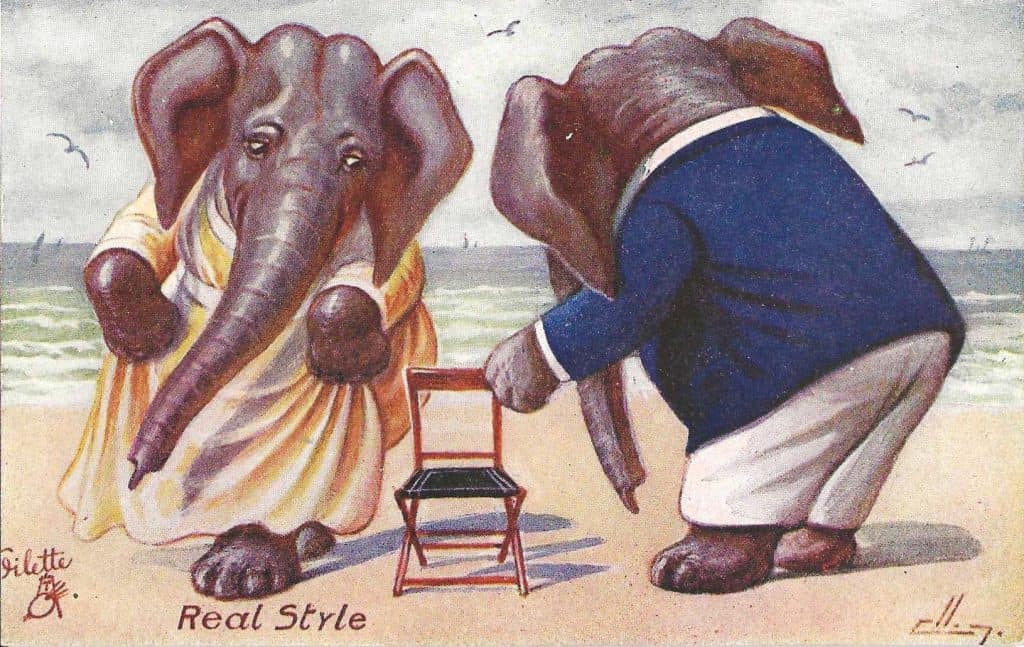
And, the weather. Weston-Super-Mare is hard against the Bristol Channel where some of the best weather in Europe greets visitors and guests year around. If you’re interest is to sit and watch the weather, you’ll have plenty of company.
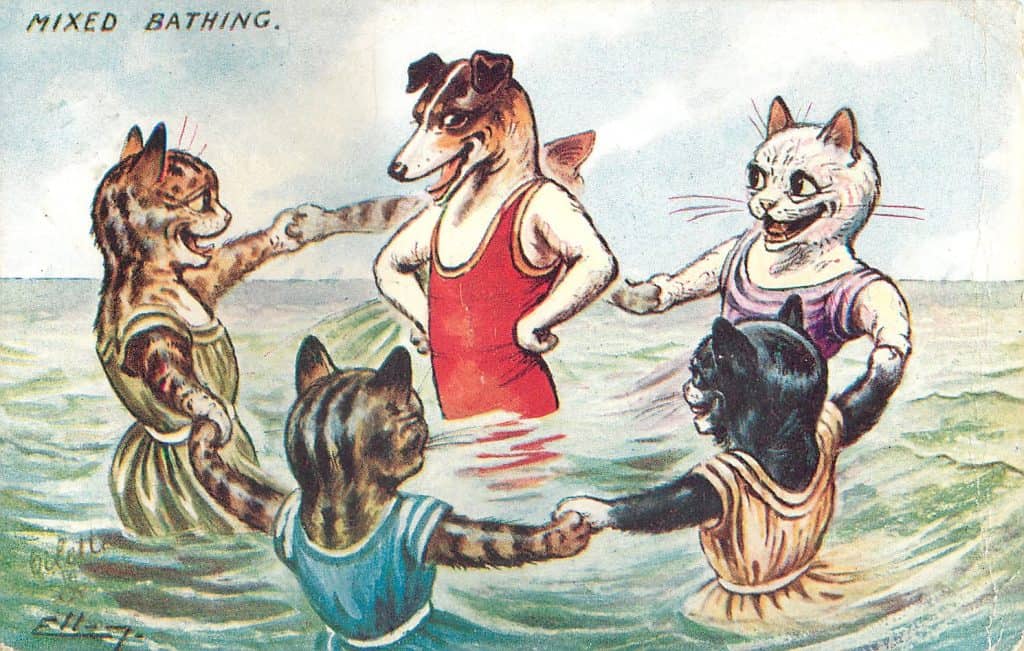
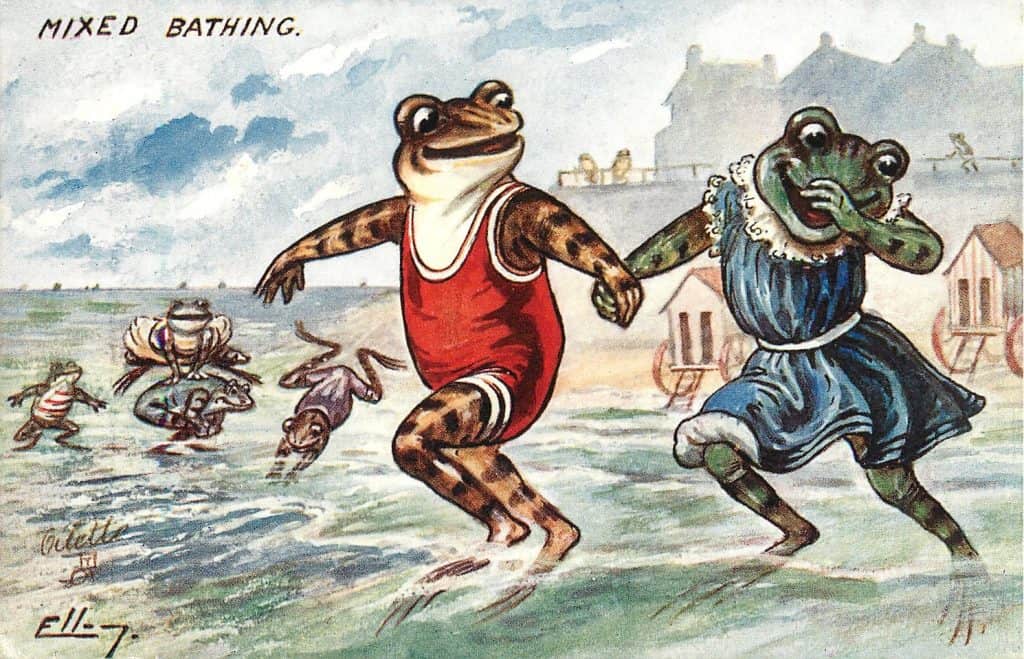
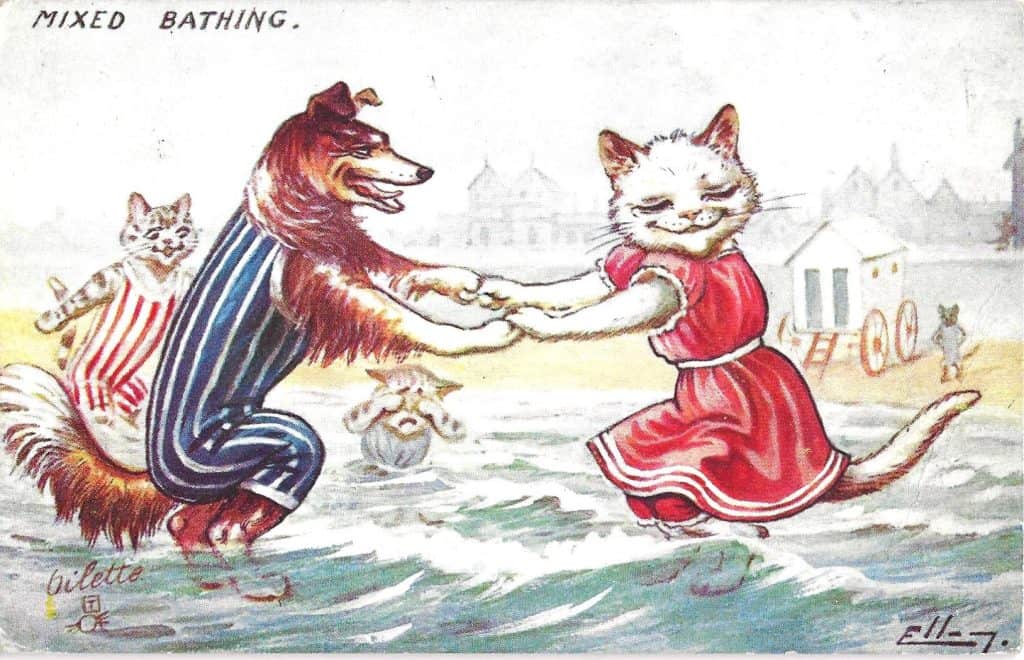
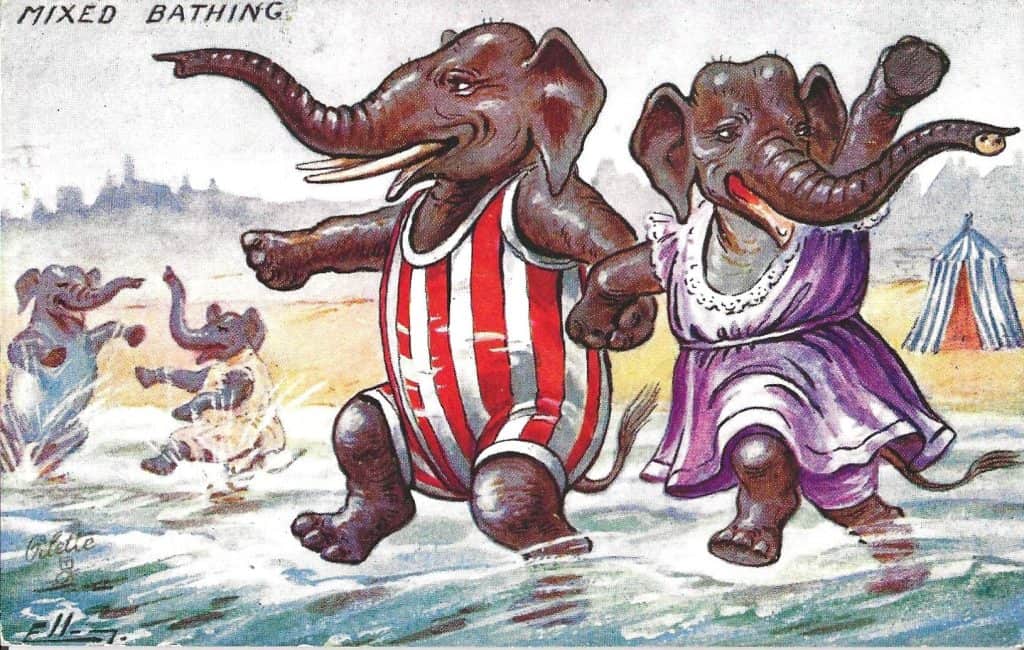
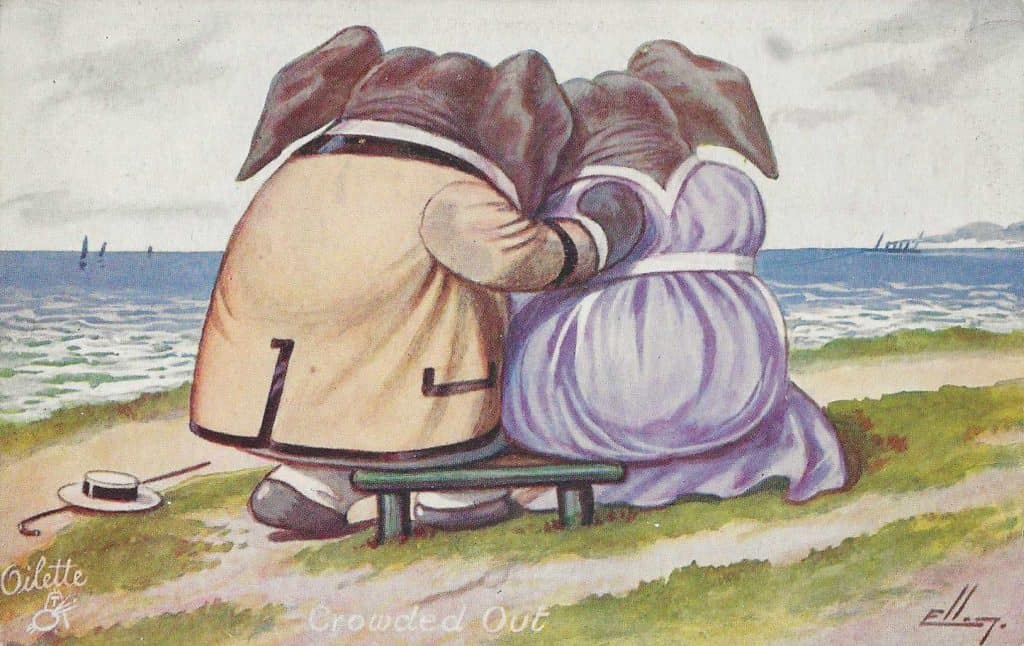
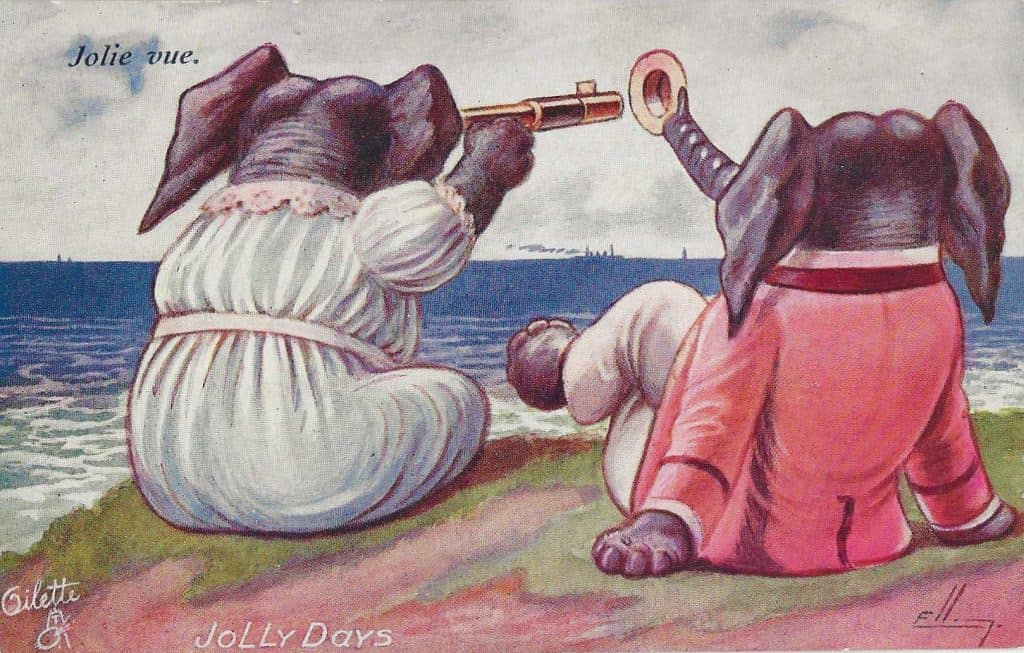
Reading this was so enjoyable. The postcards made me smile.
This is fun Thank you so much.
Excellent post and his ‘style and art’ oh so unique – thank you
Thank you very much for the thrilling article and fascinating cards!
I always loved Ellam’s sense of humor shown in his cards. I also always find it interesting that there is a distinction between an artist and illustrator which I discoverd in researching artists on blotters. Many of them webt to the same schools.
The final postcard suggests that although species as small as cats and as large as elephants are welcome, chairs that are provided only come in one size.
Those are incredible! I love the dog teaching the cat to swim. The poor donkey though. I thank you for the article, as I have a RPPC from 1907 “Mixed Bathing,” and I really didn’t know if that meant men and women, or races. In 1907 I guess I should have known.